Nanoplastics present worldwide in air, water and soil, with impacts on human and environmental health

Plastic is now ubiquitous across Earth’s habitats, with all life forms ingesting and inhaling nanoplastics (smaller than microplastics) – whose ability to cross biological membranes, including the blood/brain, has implications for human and environmental health – according to a “Science for Environment Policy” report written by UWE Bristol at the request of the Environment Directorate-General of the European Commission. The report, which looks at the emerging threat posed by nanoplastics to the environment and human health, was recently published by them.
Written by the Science for Environment Policy team at the University’s Science Communications Unit, the research highlights how some nanoplastics form from plastic litter, as plastic degrades to microplastics, and then to nanoplastics – with some plastics releasing toxic chemicals, such as plasticisers, into the environment and into the lifeforms that ingest them, including humans. There is evidence emerging of lethal and sub lethal effects of nanoplastics in various species, of various plastic types, at both high concentrations and levels that are found in the environment. To help advance research in this area, the European Union has some projects underway on the health impacts of micro- and nanoplastics which will investigate nanoplastics’ impacts on health over the next few years.
Nanoplastics research is a very fast-moving area of research, with new techniques for detecting and quantifying nanoplastics in development, in order to better identify nanoplastics of various plastic types, and work out their impacts on the environment and organisms. The environmental future brief highlights what is known on the methods of detection of nanoplastics, their impacts upon a variety of species, and their potential impacts on human health.
For example, after being eaten, nanoplastics have been shown to move within fish and invertebrate species such as salmon, Japanese rice fish, scallops and mussels, to the brain, liver, gonads and kidney. There is some evidence that animal mothers ingesting nanoplastic particles via eating them or inhaling them can also pass these on to their young. One of the main toxic health concerns with nanoplastics is that they bioaccumulate up the food chain, so in the oceans this means nano and micro plastics can impact greatly on marine mammals, such as whales found in the Mediterranean Sea, who consume prey that has ingested high levels of micro and nanoplastics from this polluted part of the ocean.
Nicola Shale, a science writer and editor in the Science Communications Unit, and the one of the authors of the report, said: “Nanoplastics' environmental fate is not completely understood, it is known that in the environment different nanoplastic types i.e. PVC, polyethylene, polystyrene behave differently – with a surface layer known as an ‘ecocorona’ forming – affecting whether toxic materials can bind and be carried on their surface, and how they may be absorbed if ingested. Also, different plastics contain different levels of toxic plasticisers that leach into the environment as they degrade, with PVC being one of the more toxic types of plastic in this regard.”
The regulatory response is lagging behind the pace of nanoplastic release and abundance in the environment. Recent and ongoing efforts to regulate intentionally added microplastics, and nanoplastics, within the European Union instigated much debate about the most appropriate lower size limit for classifying microplastics. This was due to it being difficult at present to detect and quantify nanoplastics in most products to enable enforcement of a regulation. The European regulatory solution has been that the category ’microplastics’ has no lower size limit – so includes nanoplastics – placing the burden of responsibility on the producer of the product, whilst avoiding leaving a gaping hole in the regulation to reduce or eliminate intentionally added micro- and nano- plastics from European products.
Shale added: “More research on the human health impacts of nanoplastic particles is needed. There is some evidence that the type of plastic, the size of the nanoplastic particle, its shape and the ‘ecocorona’ formed on its surface, can all influence the inflammation potential in the human body. But the main hazard from nanoplastics is the potential that toxic additives, such as plasticisers, and other attached pollutants are carried into organs in the human body causing inflammation. Nanoplastics could affect the microbiome in our intestines as well as the cells of the intestine, the lungs and the liver – where most small plastic particles will end up. There is some limited evidence pointing towards potential negative impacts on the cells of the immune system and increasing cell growth in cancers – but evidence is at the early stages and is still being gathered.”
The main way people are exposed to nanoplastics internally is thought to be via food, some of which has nanoplastics in it which has landed on it from the air. A study which found microplastics in human breastmilk, which must have been ingested from one of the routes of entry into the human body, breathing them in or eating them, found no correlation with the use of plastic personal care products or consumption of shellfish/fish, or food in plastic packaging, inferring the microplastic may have come from the air.
Shale said: “Steps are being taken by policy makers to ensure producers have to reduce or remove the micro- and nanoplastics from products in Europe. The new regulation will reduce addition of plastic particles, it isn’t an instant solution with the time to comply varying for products, from only two years, to 12 years for some cosmetic products. However, recycling strategies for plastics such as the banning in Europe of single use plastics will also help. As consumers, we can choose to buy less plastic products going forward. We can be careful how we dispose of our plastics – ensuring they are recycled. We can also be sensible about minimising the amount of food and drinks we consume from cheap single use plastic containers – particularly where hot food or drink is present, as this may increase the rate at which plasticisers leach out of the plastic into the food items.”
Related news
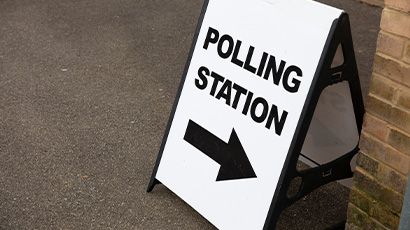
25 April 2025
Opinion: ‘Where is the vision in the WECA mayoral race?’
Dr Thom Oliver, senior lecturer in politics, gives his expert opinion as voters prepare to head to the polls to elect a new WECA mayor on 1 May.

24 April 2025
Laying Pluckley’s ghosts to rest: new research uncovers the truth about the most haunted village in England
New research from UWE Bristol has solved a series of tantalising mysteries associated with Pluckley in Kent, known as the ‘most haunted village in England’.
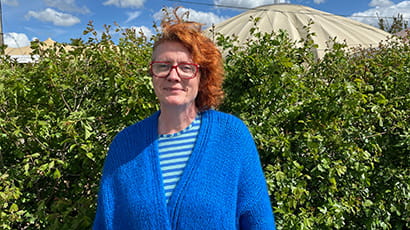
16 April 2025
UWE Bristol academic paper named as one of this century’s most-cited
A UWE Bristol academic has co-authored the third most-cited academic paper of this century, according to new analysis released by research journal Nature.

16 April 2025
More than 80 UK projects receive nearly £1.2 million in first Immersive Arts funding round
Almost £1.2 million has been allocated to 83 artist-led projects across the UK.
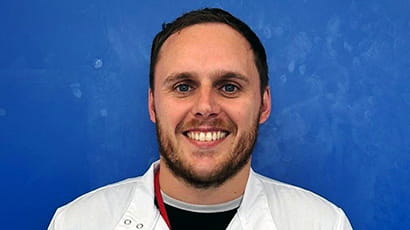
11 April 2025
UWE Bristol academics among emerging scientific leaders to receive share of £7.6m for health research
Two UWE Bristol researchers are among the recipients of a £7.6 million investment from the Academy of Medical Sciences aimed at tackling urgent health challenges.

09 April 2025
New research to support a thriving health and care workforce is launched
A national research partnership will explore ways to support wellbeing and sustainability in the NHS and social care same day and urgent care workforce.

08 April 2025
Associate Professor named among newest members of UK Young Academy of emerging leaders
The Royal Society has named UWE Bristol’s Dr Alexandros Stratakos, Associate Professor and Principal Investigator in Sustainable Agri-Food Production, as one of the emerging leaders across the UK who are the newest members of the UK Young Academy.
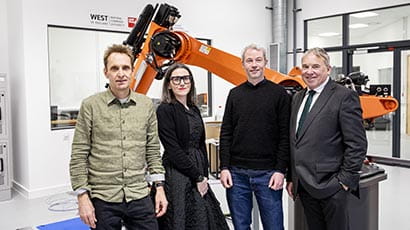
03 April 2025
Interdisciplinary studio bridging the gap between creative industries and technology opens at UWE Bristol
A new £3.6m laboratory has opened at UWE Bristol which will provide a unique arts, humanities and technologies multi-disciplinary space for researchers, entrepreneurs and businesses across the West of England.
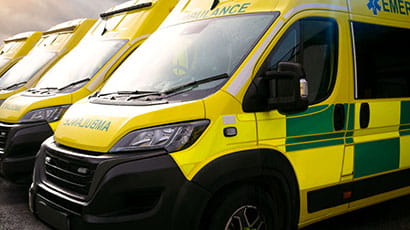
28 February 2025
Paramedics in GP surgeries may ease workload but not NHS costs, study finds
Paramedics working in GP surgeries help reduce GP workload but do not contribute to cost savings to the NHS, according to the first major study of the clinical and cost-effectiveness of paramedic compared with GP consultations.

11 February 2025
Comics could help explain science in court, study finds
Comics explaining the complexities of forensic science in simple terms could improve understanding for jurors in court cases, research conducted at UWE Bristol suggests.
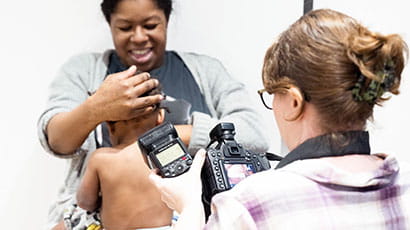
06 February 2025
Opinion: ‘We’re ensuring people have access to diverse images for healthcare’
Flicking through the pages of academic medical textbooks back in 2022, our team spotted a surprising omission: a stark absence of images of health conditions on darker skin tones.
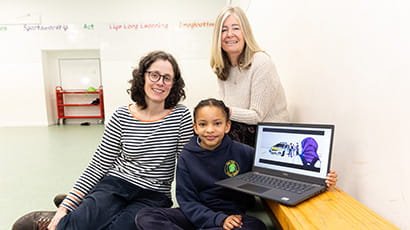
03 February 2025
Groundbreaking UWE Bristol project based on children’s lived experiences of racism in the UK set to transform police training
UWE Bristol researchers have worked with over 1,000 primary-aged children to explore everyday experiences of racism to inform future police training.






